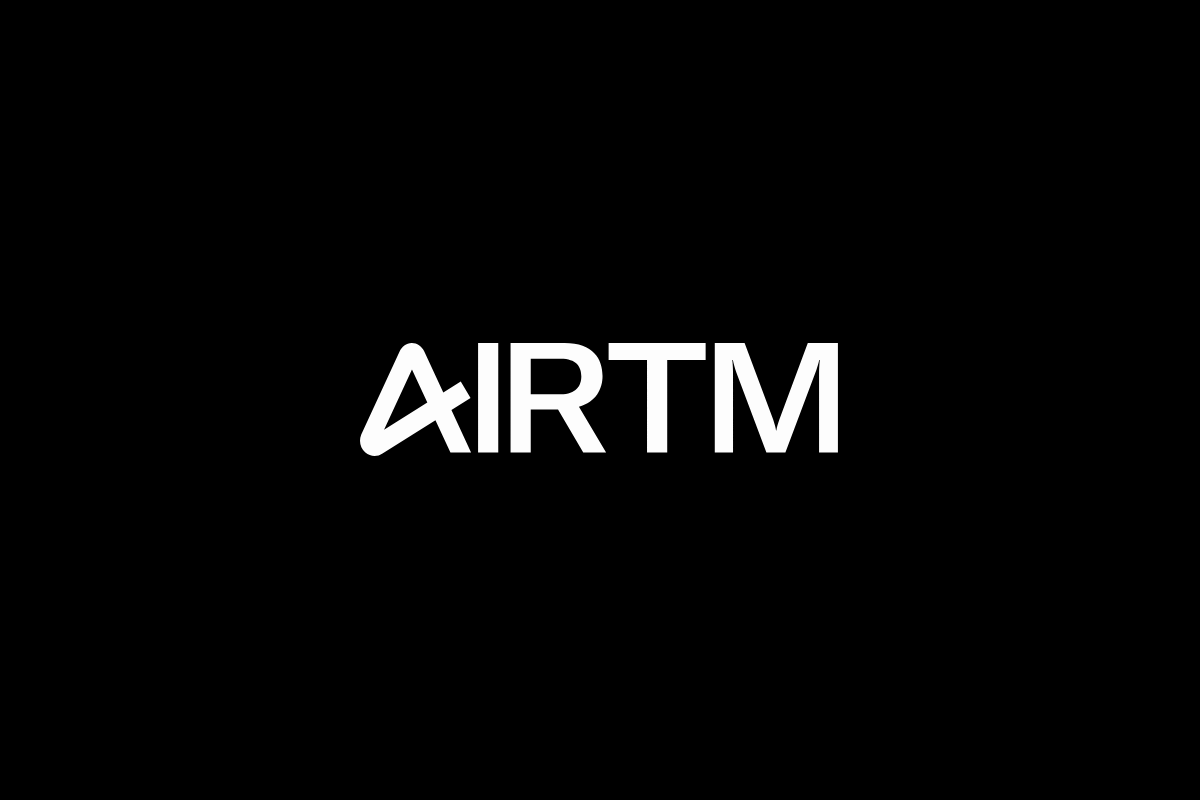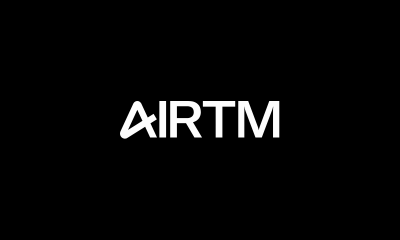Fintech
Opera reports fourth quarter and full-year 2021 Results

Opera Limited (NASDAQ: OPRA), one of the world’s largest internet consumer brands with hundreds of millions of users worldwide, today announced its unaudited consolidated financial results for the quarter ended December 31, 2021.
Fourth quarter and full year 2021 financial highlights
|
Three Months Ended December 31, |
Year-over- |
Twelve Months Ended December 31, |
Year-over- |
|||||||||||||||||||||
|
[US$ thousands, except for margins and per ADS amounts] |
2020 |
2021 |
year % |
2020 |
2021 |
year % |
||||||||||||||||||
|
Revenue |
50,229 |
72,626 |
44.6 |
% |
165,056 |
250,991 |
52.1 |
% |
||||||||||||||||
|
Net income (loss) |
28,527 |
(84,209) |
-395.2 |
% |
179,174 |
(15,784) |
-108.8 |
% |
||||||||||||||||
|
Margin |
56.8 |
% |
-115.9 |
% |
108.6 |
% |
-6.3 |
% |
||||||||||||||||
|
Adjusted EBITDA (1) |
14,052 |
16,091 |
14.5 |
% |
24,969 |
27,850 |
11.5 |
% |
||||||||||||||||
|
Margin |
28.0 |
% |
22.2 |
% |
15.1 |
% |
11.1 |
% |
||||||||||||||||
|
Adjusted net income (loss) (1) |
45,298 |
(77,906) |
-272.0 |
% |
62,876 |
5,661 |
-91.0 |
% |
||||||||||||||||
|
Margin |
90.2 |
% |
-107.3 |
% |
38.1 |
% |
2.3 |
% |
||||||||||||||||
|
Diluted net income (loss) per ADS, US$ |
0.25 |
(0.73) |
-395.5 |
% |
1.51 |
(0.14) |
-109.0 |
% |
||||||||||||||||
|
Diluted adjusted net income (loss) per ADS, US$ (1) |
0.38 |
(0.68) |
-279.1 |
% |
0.53 |
0.05 |
-90.8 |
% |
||||||||||||||||
|
(1) Please see the separate section “About non-IFRS financial measures” for the definitions of adjusted EBITDA and adjusted net income. |
|
“We’re very excited that both revenue and adjusted EBITDA came in ahead of expectations, closing out a very strong 2021”, said Co-CEO Song Lin. “Looking back, we can conclude that our investments in marketing to accelerate our growth trajectory and strengthen our position in higher-ARPU markets, and investments in our strong and growing product portfolio, have paid off.”
“Even more encouragingly, as we look ahead, we have every expectation that we will continue a healthy growth trajectory from this elevated scale, with margins continuing to normalize.”
Fourth Quarter and Recent Business Highlights
- Core search and advertising revenue growth rates grew 47% year-over-year in the fourth quarter, driven by strong browser and news performance.
- Opera’s average monthly active user base was 344 million MAUs in the quarter; with a continued directional shift towards higher ARPU markets. User growth was the strongest in the Americas, this time led by Latin America up 35% and North America up 22%, while we continue to focus investments in emerging markets more specifically towards users that are monetizable.
- In the fourth quarter, each user on average generated a record 83 cents of revenue on an annualized basis, up 11% sequentially, and up 62% compared to the fourth quarter of 2020.
- The Opera GX gaming browser had over 14 million monthly active users across PC and mobile during the fourth quarter.
- The beta version of the Opera Web 3.0 browser was released as the newest addition to our family of browsers.
- Our equity-accounted investee Nanobank has experienced a prolonged period of inability to operate in India, and as a result we have impaired all assets and intangible values related to its Indian subsidiary, totaling $82.6 million and resulting in a negative net income for the year.
- Opera announced a $50 million stock buyback program that is in effect for the next two years.
Business Outlook
“We are very pleased that the strategy we have embarked on is already paying off,” said CFO Frode Jacobsen. “It is encouraging that our margins normalized faster than anticipated as our investments in the business have resulted in revenue growth ahead of plan.”
For the first quarter of 2022, Opera expects revenue of $67 million to $70 million, representing 33% year-over-year growth at the midpoint and reflecting normal seasonality, while benefiting from the additional scale we built throughout 2021. Adjusted EBITDA is expected to be between $4 million and $7 million.
For the full year of 2022, Opera expects revenue of $300 million to $310 million, representing a 22% year-over-year increase at the midpoint. We expect adjusted EBITDA to be between $50 million and $60 million, or an 18% margin at the midpoint, versus 11% for 2021. Our 2022 results are expected to benefit from the continued growth of our products in Western markets as well as the continuation of underlying ARPU improvements across all of our regions.
Other updates
Opera holds valuable investments in OPay (6.44%), StarMaker (19.35%), and Nanobank (42.35%).
Nanobank, our equity-accounted investee which provides microlending services in several emerging markets, saw record activity in all of its active markets except for India. As we noted in our third quarter report, Nanobank’s Indian subsidiary became subject to inspection by the Ministry of Finance of India and now by its regulator, with particular focus on the fees paid for use of technology and platform infrastructure that is developed centrally by Nanobank for use across all of its operating markets. That process has taken months, and is still ongoing. Pending a resolution, a substantial portion of the funds of Nanobank’s Indian subsidiary have been subject to seizure, effectively halting its entire Indian operation. As a consequence of the prolonged situation and lack of clarity, Nanobank has recognized material provisions and impairments in the fourth quarter to bring the book value of its Indian subsidiary to zero; consequently we have impaired our investment in Nanobank to reflect the circumstances. That led to substantial non-cash losses in the quarter, partially offsetting the accounting gain associated with the creation of Nanobank in the third quarter of 2020. While we are taking an appropriate approach in our financial statements, Nanobank remains highly engaged to facilitate a return of operations.
Fourth quarter 2021 consolidated financial results
All comparisons in this section are relative to the fourth quarter of 2020 unless otherwise stated.
Revenue increased 45% to $72.6 million in the quarter.
- Search revenue increased by 35% to $34.8 million driven by both PC and mobile browser monetization growth.
- Advertising revenue increased by 59% to $36.7 million, predominantly fueled by monetization growth within Opera News, our ad tech platform and our mobile browsers.
- Technology licensing and other revenue was $1.2 million.
Operating expenses increased by 31% to $70.6 million.
- Combined technology and platform fees, content cost and cost of inventory sold was $5.5 million, a 150% increase following the scaling of associated revenues.
- Personnel expenses, including share-based remuneration, were $18.0 million, a 13% increase. This expense consists of cash-based compensation expense of $14.9 million, nearly flat year-over-year, and $3.1 million of share-based remuneration expense.
- Marketing and distribution expenses were $30.3 million, an increase of $18.0 million or 146% versus the fourth quarter of 2020, while representing a slight decline compared to the immediate prior quarters.
- Depreciation and amortization expenses were $4.6 million, a 22% decrease as relevant asset bases declined over time.
- Impairment of non financial assets of $6.4 million were mainly related to our decision to close our fintech office in Tallinn.
- Other operating expenses were $5.7 million, a 16% decrease predominantly driven by reductions in credit loss expenses and professional services.
Operating profit was $2.2 million compared to an operating profit of $2.4 million in the fourth quarter of 2020.
Other items in the quarter include a total impairment of $82.6 million related to the Indian subsidiary of Nanobank. $62.1 million of this amount is recorded in a new line item called impairment of associates and joint ventures and the remaining $20.5 million is included as the main component in our share of net loss of associates and joint ventures.
Income tax expense was $2.4 million in the quarter.
Net loss was $84.2 million. This compared to a net income of $28.5 million in the fourth quarter of 2020.
Net loss per ADS was $0.73 in the quarter. Each ADS represents two shares in Opera Limited. In the quarter, the average number of shares outstanding was 230.3 million, corresponding to 115.1 million ADSs.
Adjusted EBITDA was $16.1 million, representing a 22% adjusted EBITDA margin, compared to adjusted EBITDA of $14.1 million in the fourth quarter of 2020. Adjusted EBITDA excludes share-based remuneration and non-recurring expenses, as well as other income and discontinued operations.
Adjusted net loss was $77.9 million in the quarter, compared to adjusted net income of $45.3 million in the fourth quarter of 2020. Adjusted net income excludes share-based remuneration, non-recurring expenses, discontinued operations and amortization of intangible assets related to acquisitions.
Adjusted net loss per ADS was $0.67 in the quarter.
We have posted unaudited supplemental information at https://investor.opera.com, including: 1) Opera’s financial historical results by quarter since 2019; and 2) Nanobank financial results by quarter since 2019 (pro forma prior to August 19, 2020).
Conference call
Opera’s management will host a conference call to discuss the fourth quarter 2021 financial results on Thursday, February 17th at 8:00 am Eastern Time (EST) (2:00 PM Central European Time, 9:00 PM Beijing/Hong Kong time). Listeners may access the call by dialing the following numbers:
United States: +1 877-895-3361
China: +10-800-714-1507 or +10-800-140-1382
Hong Kong: +80-090-1494
Norway: +47 80-01-3780
United Kingdom: +44 (0) 808-101-1183
International: +1 785-424-1062
Confirmation Code: OPRAQ421
A live webcast of the conference call will be posted at https://investor.opera.com.
We will be tweeting highlights from our prepared remarks. Please follow along @InvestorOpera.
About non-IFRS financial measures
To supplement our consolidated financial statements, which are prepared and presented based on IFRS, we use adjusted EBITDA and adjusted net income, both non-IFRS financial measures, to understand and evaluate our core operating performance. These non-IFRS financial measures, which may differ from similarly titled measures used by other companies, are presented to enhance investors’ overall understanding of our financial performance and should not be considered a substitute for, or superior to, the financial information prepared and presented in accordance with IFRS.
We define adjusted EBITDA as net income (loss) excluding income tax expense (benefit), net finance expense (income), share of net loss (income) of associates and joint ventures, other loss (income) from long-term investments, impairments, depreciation and amortization, share-based remuneration, non-recurring expenses, and excluding other income and profit (loss) from discontinued operations.
We define adjusted net income as net income (loss) excluding share-based remuneration, amortization cost related to acquired intangible assets, amortization of Nanobank intangible assets, non-recurring expenses, and excluding profit (loss) from discontinued operations, adjusted for the associated tax benefit related to such items.
We believe that adjusted EBITDA and adjusted net income provide useful information to investors and others in understanding and evaluating our operating results. These non-IFRS financial measures adjust for the impact of items that we do not consider indicative of the operational performance of our business. While we believe that these non-IFRS financial measures are useful in evaluating our business, this information should be considered as supplemental in nature and is not meant as a substitute for the related financial information prepared and presented in accordance with IFRS. Please refer to our financial statements at the end of this announcement for a table reconciling our non-IFRS financial measures to net income (loss), the most directly comparable IFRS financial measure.
Safe harbor statement
This press release contains statements of a forward-looking nature. These statements, including statements relating to the Company and its investees’ future financial and operating results, are made under the “safe harbor” provisions of the U.S. Private Securities Litigation Reform Act of 1995. You can identify these forward-looking statements by terminology such as “will,” “may,” “expect,” “believe,” “anticipate,” “intend,” “aim,” “estimate,” “intend,” “seek, ” “plan,” “potential,” “continue,” “ongoing,” “target,” “guidance,” “is/are likely to,” “future” and similar statements. Among other things, management’s quotations and the Business outlook section contain forward-looking statements. The Company may also make forward-looking statements in its periodic reports to the U.S. Securities and Exchange Commission (the “SEC”), in press releases and other written materials and in oral statements made by its officers, directors or employees to third parties. These forward-looking statements involve known and unknown risks and uncertainties and are based on current expectations, assumptions, estimates and projections about the Company, its investees, and the industry in which they operate. Potential risks and uncertainties include, but are not limited to, those relating to: the duration and development of the COVID-19 pandemic as well as changes in consumer behaviors as a result of such pandemic; the outcome of regulatory processes or litigation; the Company and its goals and strategies; expected development and launch, and market acceptance, of products and services; Company and its investees’ expectations regarding demand for and market acceptance of their brands, platforms and services; Company’s expectations regarding growth in its user base, user retention and level of engagement; Company’s ability to attract, retain and monetize users; Company’s ability to continue to develop new technologies, products and services and/or upgrade its existing technologies, products and services; quarterly variations in Company’s operating results caused by factors beyond its control; and global macroeconomic conditions and their potential impact in the markets in which Company or its investees have businesses. All information provided in this press release is as of the date hereof and is based on assumptions that the Company believes to be reasonable as of this date, and it undertakes no obligation to update any forward-looking statements to reflect subsequent occurring events or circumstances, or changes in its expectations, except as may be required by law. Although the Company believes that the expectations expressed in these forward-looking statements are reasonable, it cannot assure you that its expectations will turn out to be correct, and investors are cautioned that actual results may differ materially from the anticipated results. Further information regarding risks and uncertainties faced by Opera is included in the Company’s filings with the SEC, including its annual reports on Form 20-F.
Fintech
Fintech Pulse: Your Daily Industry Brief (Chime, ZBD, MiCA)

As we close out 2024, the fintech industry continues to deliver headlines that underscore its dynamism and innovation. From IPO aspirations to groundbreaking regulatory milestones, today’s updates highlight the transformative power of fintech partnerships, regulatory evolution, and disruptive technologies. Here’s what you need to know.
Chime’s Quiet Step Toward Public Markets
Chime, the U.S.-based financial technology startup best known for its digital banking services, has taken a significant step by filing confidential paperwork for an initial public offering (IPO). As one of the most valuable private fintechs in the U.S., Chime’s move could potentially signal a renewed appetite for fintech IPOs in a market that has been cautious following fluctuating valuations across the tech sector.
With a valuation that reportedly exceeded $25 billion in its last funding round, Chime’s IPO could set a new benchmark for the industry. Observers note that its strong customer base and revenue growth may make it an appealing choice for investors seeking to capitalize on the digital banking boom. However, the timing and success of the IPO will depend on broader market conditions and the regulatory landscape.
Source: Bloomberg
ZBD’s Pioneering Achievement: EU MiCA License Approval
ZBD, a fintech company specializing in Bitcoin Lightning network solutions, has made history by becoming the first to secure an EU MiCA (Markets in Crypto-Assets Regulation) license. This landmark approval by the Dutch regulator positions ZBD at the forefront of compliant crypto-fintech operations in Europe.
MiCA, which aims to harmonize the regulatory framework for crypto-assets across the EU, has been a focal point for industry players aiming to establish legitimacy and expand their offerings. ZBD’s achievement not only validates its operational rigor but also sets a precedent for other fintech firms navigating the evolving regulatory landscape.
Industry insiders view this as a strategic advantage for ZBD as it broadens its footprint in Europe. By leveraging its regulatory approval, the company can accelerate its product deployment and establish trust with institutional and retail users alike.
Source: Coindesk, PR Newswire
The Fintech-Credit Union Synergy: A Blueprint for Innovation
The convergence of fintechs and credit unions continues to reshape the financial services ecosystem. Collaborative initiatives, such as the one highlighted in the recent partnership between fintech innovators and credit unions, are proving to be a potent force in delivering tailored financial solutions.
This “dream team” approach allows credit unions to leverage fintech’s technological expertise while maintaining their community-focused ethos. Key areas of collaboration include digital payments, personalized financial management tools, and enhanced loan processing capabilities. These partnerships not only enhance member engagement but also enable credit unions to remain competitive in an increasingly digital-first financial environment.
Industry analysts emphasize that such collaborations underscore a broader trend of traditional financial institutions embracing fintech-driven solutions to bridge service gaps and foster innovation.
Source: PYMNTS
Tackling Student Loan Debt: A Fintech’s Mission
Student loan debt remains a pressing issue for millions of Americans, and a Rochester-based fintech aims to offer relief through its cloud-based platform. This innovative solution is designed to simplify loan management and provide borrowers with actionable insights to reduce their debt burden.
The platform’s features include repayment optimization tools, personalized financial education, and seamless integration with loan servicers. By addressing the complexities of student loan management, this fintech is empowering borrowers to make informed decisions and achieve financial stability.
As the student loan crisis continues to evolve, solutions like this highlight the critical role fintech can play in addressing systemic financial challenges while fostering financial literacy and inclusion.
Source: RBJ
Industry Implications and Takeaways
Today’s updates underscore several key themes shaping the fintech landscape:
- Regulatory Milestones: ZBD’s MiCA license approval exemplifies the importance of regulatory compliance in unlocking growth opportunities.
- Strategic Partnerships: The collaboration between fintechs and credit unions demonstrates the value of combining technological innovation with traditional financial models to drive customer-centric solutions.
- Market Opportunities: Chime’s IPO move reflects a potential revival in fintech public offerings, signaling confidence in the sector’s long-term prospects.
- Social Impact: Fintech’s ability to tackle systemic issues, such as student loan debt, showcases its role as a force for positive change.
The post Fintech Pulse: Your Daily Industry Brief (Chime, ZBD, MiCA) appeared first on News, Events, Advertising Options.
Fintech
SPAYZ.io prepares for iFX EXPO Dubai 2025

Leading global payments platform SPAYZ.io has confirmed it will be attending iFX EXPO Dubai 2025 on 14 to 16 January. Exhibiting at Stand 64 at Trade Centre Dubai, SPAYZ.io’s team of professionals will be on hand providing live demonstrations of its renowned payment services for payment providers. Attendees will also receive exclusive insight into SPAYZ.io’s plans for 2025 alongside early early access to its upcoming plans for the new year.
SPAYZ.io delivers a host of payment solutions that leverage the latest technological innovations and open access to the fastest growing emerging markets across Africa, Europe and Asia. Over the past year, there has been huge demand for its Open Banking and local payment method services, alongside bank transfers, mass payouts, online banking and e-wallets.
Yana Thakurta, Head of Business Development at SPAYZ.io commented: “We look forward to once again participating at iFX Dubai to expand our network of partners and clients. It’s a fantastic way to kick off the year, connecting with thousands of industry leaders from FOREX platforms to trading companies, and everything in between.
“Our key goal for iFX Dubai EXPO 2025 is to expand our portfolio of solutions and geographies. We’re using this as an opportunity to partner with like-minded entities who share our ambition to provide payment solutions that are truly global.”
Come meet SPAYZ.io’s team at the Trade Centre Dubai at Stand 64. You can also book a meeting slot with a member of a team.
The post SPAYZ.io prepares for iFX EXPO Dubai 2025 appeared first on News, Events, Advertising Options.
Fintech
Airtm Enhances Its Board of Directors with Two Strategic Appointments

Airtm, the most connected digital dollar account in the world, is proud to announce the addition of two distinguished industry leaders to its Board of Directors: Rafael de la Vega, Global SVP of Partnerships at Auctane, and Shivani Siroya, CEO & Founder of Tala. These appointments reflect Airtm’s commitment to innovation and financial inclusion as the company enters its next phase of growth.
“We are thrilled to welcome Rafael and Shivani to Airtm’s Board of Directors,” said Ruben Galindo Steckel, Co-founder and CEO of Airtm. “Their unique perspectives and proven track records will be invaluable as we continue scaling our platform to empower individuals and businesses in emerging markets. Together, we’ll push the boundaries of financial inclusion and innovation to create a more connected and equitable global economy. Rafael and Shivani bring a wealth of experience and strategic insight that will strengthen Airtm’s mission to connect emerging economies with the global market.”
Rafael de la Vega, a seasoned leader in fintech global partnerships and technology innovation, is currently the Global SVP of Partnerships at Auctane. With a proven track record of delivering scalable, impactful solutions at the intersection of fintech, innovation, and commerce, Rafael’s expertise will be pivotal as Airtm continues to grow. “Airtm has built a platform that breaks down barriers and opens up opportunities for people in emerging economies to connect to global markets. I am excited to contribute to its growth and help further its mission of fostering financial inclusion on a global scale,” said Rafael.
Shivani Siroya, CEO and Founder of Tala, is a pioneer in financial technology, renowned for empowering underserved communities through access to credit and essential financial tools. Her leadership in leveraging data-driven innovation aligns seamlessly with Airtm’s vision of creating more equitable financial opportunities. “Empowering underserved communities has always been at the core of my work, and Airtm’s mission resonates deeply with me. I’m thrilled to join the Board and work alongside such a dynamic team to expand access to financial tools that truly make a difference in people’s lives,” said Shivani.
The post Airtm Enhances Its Board of Directors with Two Strategic Appointments appeared first on News, Events, Advertising Options.
-

 Fintech5 days ago
Fintech5 days agoFintech Pulse: Your Daily Industry Brief (Chime, ZBD, MiCA)
-

 Fintech PR5 days ago
Fintech PR5 days agoAccording to Tickmill survey, 3 in 10 Britons in economic difficulty: Purchasing power down 41% since 2004
-

 Fintech6 days ago
Fintech6 days agoSPAYZ.io prepares for iFX EXPO Dubai 2025
-

 Fintech6 days ago
Fintech6 days agoAirtm Enhances Its Board of Directors with Two Strategic Appointments
-

 Fintech PR4 days ago
Fintech PR4 days agoPresident Emmerson Mnangagwa met this week with Zambia’s former Vice President and Special Envoy Enoch Kavindele to discuss SADC’s candidate for the AfDB
-

 Fintech PR2 days ago
Fintech PR2 days agoGCL Energy Technology and Ant Digital Technologies Launch First Blockchain-Based RWA Project in Photovoltaic Industry
-

 Fintech PR5 days ago
Fintech PR5 days agoStay Cyber Safe This Holiday Season: Heimdal’s Checklist for Business Security
-

 Fintech PR5 days ago
Fintech PR5 days agoMedicilon Appoints Dr. Lilly Xu as Chief Technology Officer
















